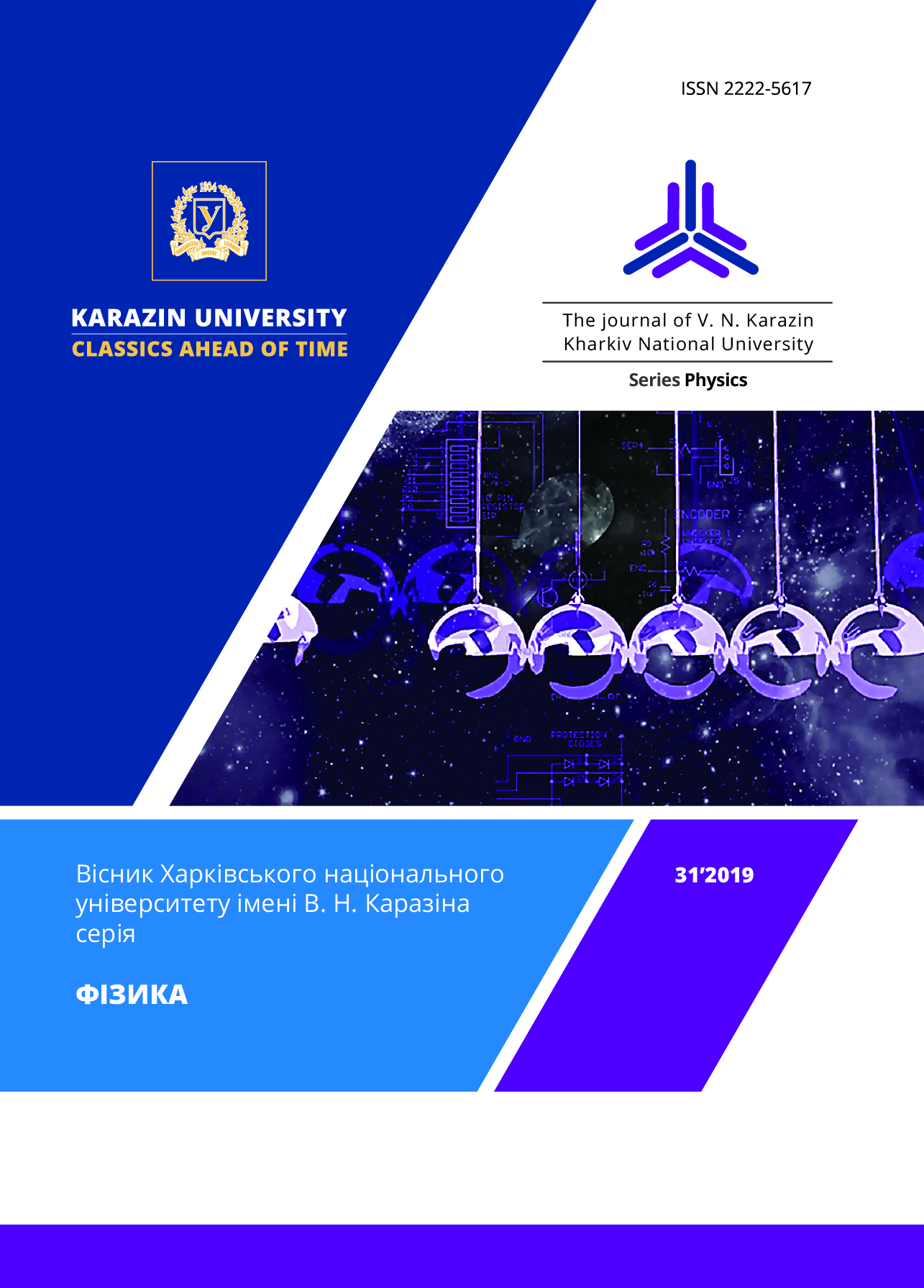Peculiarities of synthesis of Ag-doped hydroxyapatite ceramics
Abstract
The study is devoted to the preparation of antimicrobial Ag-containing bioactive calcium phosphate ceramics based on carbonated hydroxyapatite and to the determination of the dependence of its phase composition and microstructure on the synthesis temperature. Composite ceramics was obtained by sintering powders of carbonated hydroxyapatite (CHA), synthesized as a result of a reaction between calcium carbonate and phosphoric acid, with the addition of silver nitrate. Ceramics were sintered at 900 and 1000 °C temperatures, i.e., temperatures below and above the melting point of silver. X-ray analysis, electron microscopy, and infrared spectroscopy showed that synthesis at a 900 °C temperature (below the melting point of metallic silver) produces a two-phase composite based on CHA with inclusions of silver nanoparticles smaller than 50 nm in size. From X-ray analysis, with an increase in silver concentration, the lattice constant a remains practically unchanged, while the constant c ‒ increases. This behavior, due to the significant difference in the ionic radii of calcium and silver (Ca2+ ‒ 0.99 Å, Ag+ ‒ 1.28 Å), usually leads to the preferential substitution of Ca(1) sites in the CHA and a linear increasing in the lattice parameters of the CHA with the Ag concentration. That is, even at relatively low temperatures, as a result of the solid-phase reaction in CHA, partial replacement of calcium ions by silver ions occurs and Ag-substituted ceramics are formed. At temperatures above 1000 °C, a single-phase silver-substituted product is synthesized where part of the Ca2+ ions is replaced by Ag+ ions. At the same time, the lattice constant c continues to increase, and in the electron microscopic images only the apatite grain structure is visible without any inclusions. Sintering of composite ceramics at a temperature when silver is in the liquid phase and more easily dissociates into ions compared to the solid phase, results in a single-phase silver-substituted ceramic.
Downloads
References
M. Epple and E. Baeuerlein (Eds.). Biomineralisation. Medical and Clinical Aspects, Wiley-VCH, Weinheim. 2007.
S. V. Dorozhkin. J Mater Sci., 42, 1061–1095 (2007). DOI 10.1007/s10853-006-1467-8
W. Suchanek and M. Yoshimura. J. Mater. Res., 13, 94-117 (1998).
M. Itokazu, T. Sugiyama, T. Ohno, E. Wada and Y. Katagiri. Journal of Biomed. Mat. Res., 39, 536–538 (1998).
V. Stanić, D. Janaćković, S. Dimitrijević, S. B. Tanasković, M. Mitrić, M. S. Pavlović, A. Krstić, D. Jovanović, S. Raičević. Applied Surface Science., 257, 4510–4518 (2011).
N. Rameshbabu, T.S. Sampath Kumar, T.G. Prabhakar, V.S. Sastry, K.V.G.K. Murty, K. Prasad Rao. J. Biomed. Mater. Res., 80A, 581–591 (2007).
H. Yang, B. Xiao, Ke-Wei Xu. J Mater. Sci.: Mater. Med., 20, 785–792 (2009). DOI 10.1007/s10856-008-3630-z
V. Stanić, S. Dimitrijević, J. Antić-Stanković, M. Mitrić, B. Jokić, I. B. Plećaš, S. Raičević. Applied Surface Science., 256, 6083–6089 (2010).
N. J. Coleman. J. Mater. Sci. Mater. Med., 20, 1347–1355 (2009). DOI 10.1007/s10856-009-3698-0
M. Li, X. Xiao, R. Liu, C. Chen, L. Huang. J. Mater. Sci.: Mater. Med., 19, 797–803 (2008). DOI 10.1007/s10856-007-3213-4
W. Chen, S. Oh, A. P. Ong, N. Oh, Y. Liu, H. S. Courtney, M. Appleford, J. L. Ong. J. Biomed. Mater. Res., 82A, 899–906 (2007).
Y. Chen, X. Zheng, Y. Xie, C. Ding. J Mater Sci: Mater. Med., 19, 3603–3609 (2008). DOI 10.1007/s10856-008-3529-8
R. Nirmala, F. A. Sheikh, M. A. Kanjwal, J. H. Lee, S-J. Park, R. Navamathavan, H. Y. Kim. J. Nanopart. Res., 13, 1917–1927 (2011). DOI 10.1007/s11051-010-9944-z
Zyman Z, Tkachenko M. J.Eur.Ceram.Soc., 31, 241–248 (2011). doi:10.1016/j.jeurceramsoc.2010.09.005
G. Lv, Y. Li, A. Yang, X. Zhang, W. Yang, J. Li. Materials Science Forum., 510-511, 78-81 (2006).
T. Bera, P. Ramachandrarao. J Mater. Sci., 44, 2264–2270 (2009). DOI 10.1007/s10853-008-2861-1
Ruan H. J., Fan C. Y., Zheng X. B., et al. Chinese Sci. Bull., 54, 4438―4445 (2009). doi: 10.1007/s11434-009-0175-6.
M. Díaz, F. Barba, M. Miranda, F. Guitián, R. Torrecillas, and J. S. Moya. Journal of Nanomaterials., 1-6, ID 498505, (2009). doi:10.1155/2009/498505
K. S. Oh, K. J. Kim, Y. K. Jeong, E. K. Park, S. Y. Kim. J. H. Kwon, H. M. Ryoo, and H. I. Shin. Key Engineering Materials Vols., 264-268, 2107-2110 (2004).
M. Shirkhanzadeh, M. Azadegan, G.Q. Liu. Materials Letters., 24, 7-12 (1995).
X. Zheng, Y. Chen, Y. Xie, H. Ji, L. Huang, and C. Ding. Journal of Thermal Spray Technology., 18(3), 463-463 (2009). DOI: 10.1007/s11666-009-9376-4








3.gif)
